Puerto Rican Vs. Dominican food: How are these two culinary cultures different? Learning about the differences between these two famous cuisines is crucial if you love eating tropical dishes from the Caribbean.
While many often compare Dominican with Cuban cuisine, the former also shares some resemblances with Puerto Rican food. It’s because they both have countless delicious dishes, various cooking methods, and iconic tropical ingredients.
Although Puerto Rican and Dominican Republic food are both delicious, there are still some traits that make them unique. Continue reading, and you can understand more about the basics and specialty of each culinary culture. Now to avoid wasting your time, let’s get started!
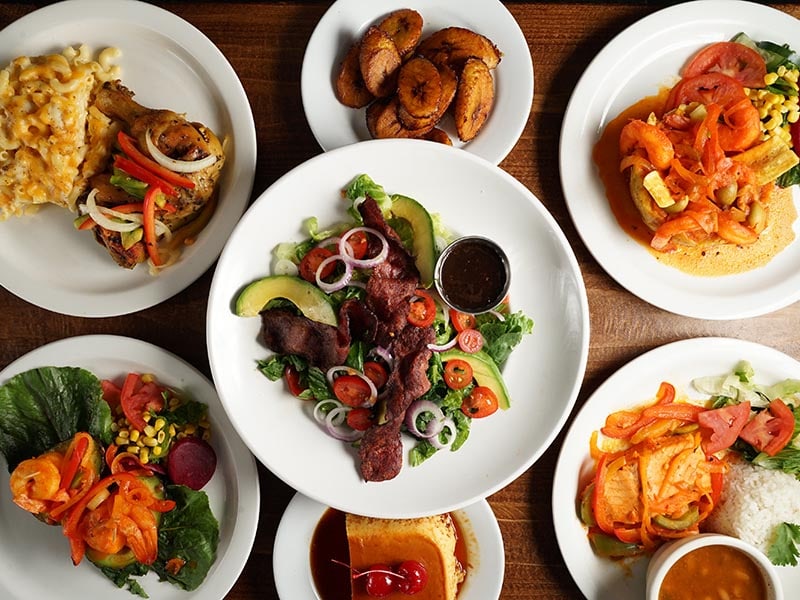
What Makes Puerto Rican Cuisine So Special?

Similar to the culinary cultures of the other Caribbean countries, Puerto Rican cuisine is a blend of various cuisines of the world, including African, Spanish, and Taino. Puerto food is very rich in calories (fat and sugar) with filling and diversified flavors.
Créole Cooking And The Other Cultural Influences
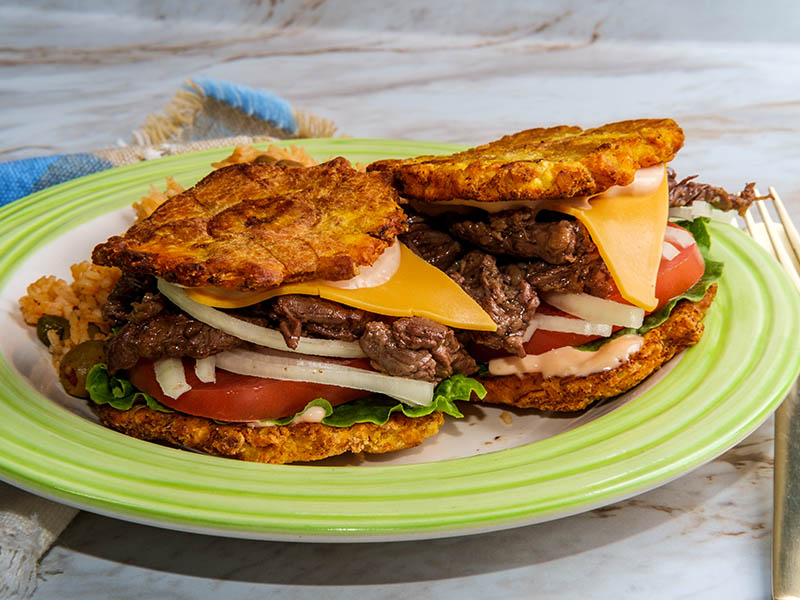
This cooking style is a common trait of Puerto Rican cuisine called Cocina Criolla or creole cuisine. The first inhabitants of this tropical island were the Tainos and Arawaks, who cultivated tropical fruits, corn, and seafood.
The Spanish discovered and colonized the island in the early 1500s, introducing dairy products, wheat, and rice to Puerto Rican cuisine. The arrival of enslaved African people to this island also brought new African legumes to the territory.
All of these diverse ingredients and vegetables from different origins result in a blending and multi-ethnic beauty of Puerto Rican food.
Spices Are The Soul Of Puerto Rican Food
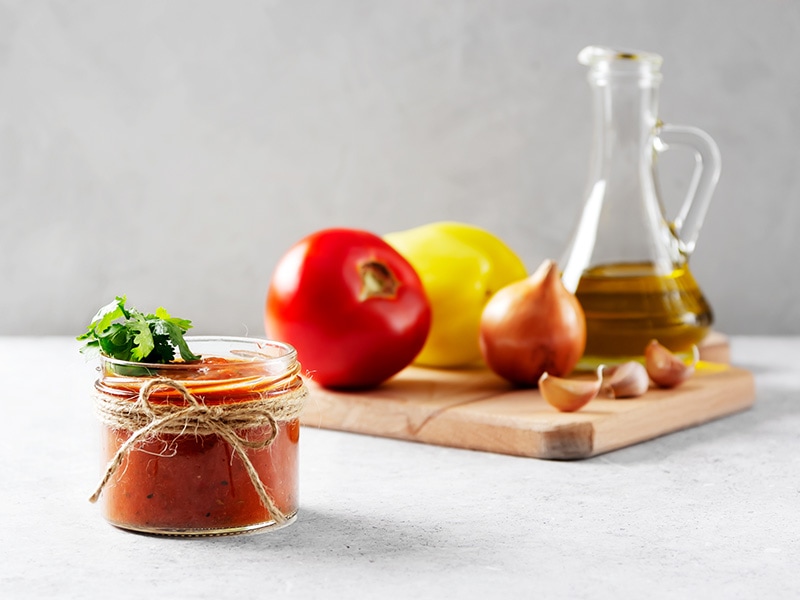
The Puerto Rican people love flavorful and filling food, so it is not strange that they integrate multiple spices and herbs in their cooking. Some indigenous Puerto Rican spices are pepper, onion, garlic, and oregano, to name a few.
Therefore, Puerto Rican food generally features meaty or salty flavors with a crunchy and colorful texture. This country’s most popular mixture used for savory seasoning dishes is the blend of lime juice, oregano, garlic, and olive oil.
There is also a popular seasoning vegetable sauce called sofrito, which brings a herbal and peppery flavor.
The Common Traits Of Dominican Food
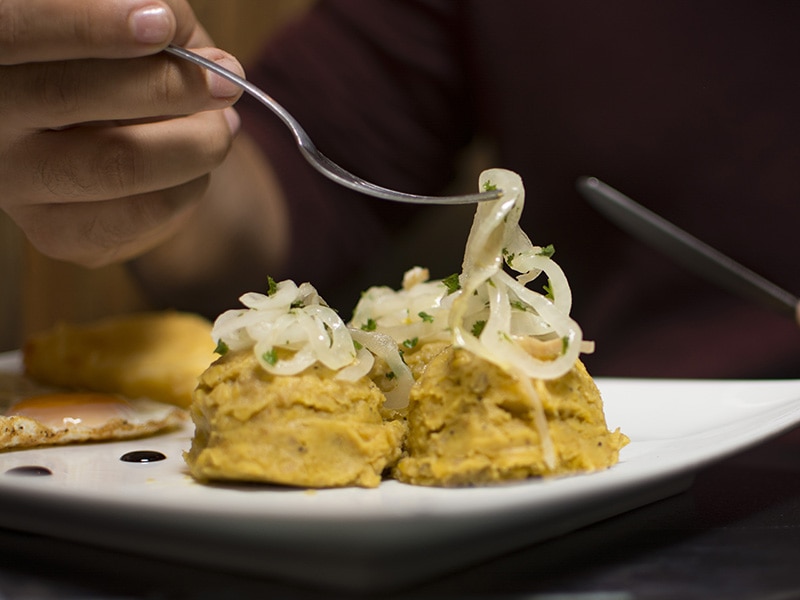
You can find traditional Dominican food, from snacks and desserts to the main meals. The people on this island love tender and slushy food, which incorporates and gives a burst of flavor when chewing.
For this reason, Dominican people are willing to spend hours stewing and preparing their food. That’s why you can feel the soul and passion of the cook in each dish.
A Result Of Culinary Influences
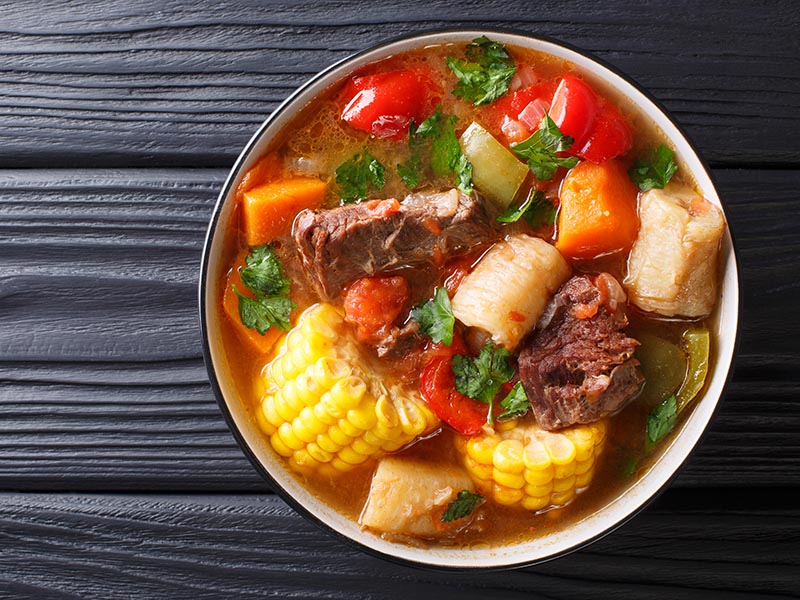
Similar to the other Caribbean countries, the Dominican Republic was once colonized by Spain, which happened from the late 15th century to the 19th century, with some interruptions. (1)
The Spanish colonization has left Dominican cuisine with various new ingredients, recipes, and cooking methods.
Although the name of the dishes may differ, you can find many similar traditional recipes from Spain and Latin America in Dominican restaurants. Some popular traditional Spanish integrated into Dominican cuisine are La Bandera Dominican and sancocho.
In addition, Dominican cuisine is also partly influenced by the culinary culture of Puerto Rico. The migrants between Puerto Rican and the Dominican Republic have led to many similarities between their cultures and cuisines.
For this reason, many original Puerto Rican dishes are popular in the Dominican and vice versa. Besides, Dominican cuisine is also a blend of Spanish, Taíno, Middle Eastern, and African influences, with occasional borrowings from China and Europe.
The diversified flavors, textures, and spices of the food in the Dominican Republic remind us of the other countries’ culinary influence on this small island.
The Staple Ingredients In Dominican Cuisine
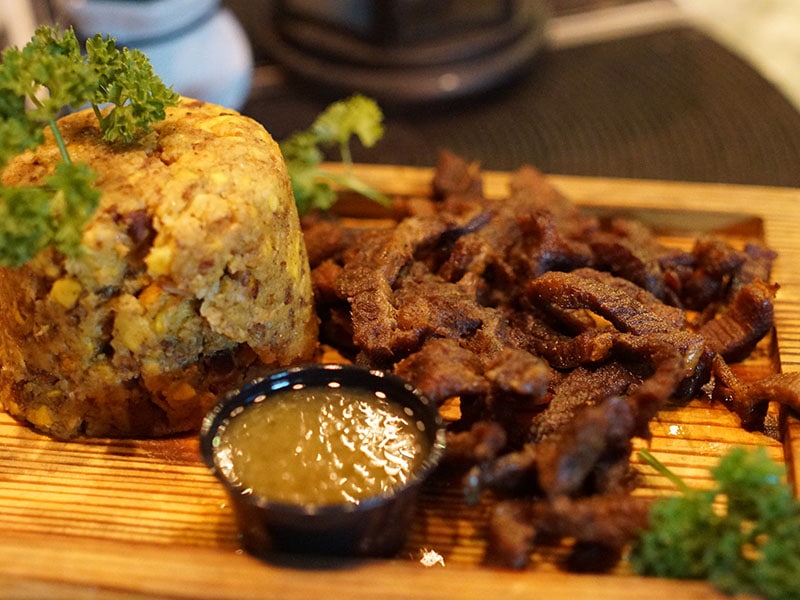
If you come to the Dominican Republic and order a random dish from the restaurant, chances are you will encounter at least one of several staple ingredients: meat or seafood, grains, and vegetables. (2)
On a tropical island like the Dominican Republic, fresh seafood and red or white meat are abundant, along with countless tropical fruits and vegetables. A typical Dominican dish consists of two main components: stewed meat and a mix of vegetables.
Although Dominican cuisine is deeply influenced by other culinary cultures, it mainly involves domestic spices and cooking ingredients. The reason can be attributed to the ideal climate and geographical conditions of the country, making agriculture a leading field.
Since most Dominican households live on the cultivation of crops and animals, they use the ingredients harvested from local farms for their daily cooking. Therefore the ingredients always come in the highest quality and freshness.
Some familiar Dominican fruits are mango, apple, guava, and pawpaw. However, plantain and banana are still Dominican cuisine’s most prevalent and versatile ingredients. They can be used for making savory dishes, drinks, and even desserts.
Puerto Rican Vs. Dominican Food: Which One Is Your Favorite?
Before I move on to discuss the similarities between these two famous cuisines, let’s discover their core differences first. Here are some noticeable differences between Puerto Rican and Dominican food.
What Do Puerto Rican And Dominican Food Have In Common?
As the two countries are both tropical islands located in the Caribbean region, it inevitably forms many similarities between their culinary cultures. Here are some common traits that you can find in both cuisines:
It Is All About Plantain
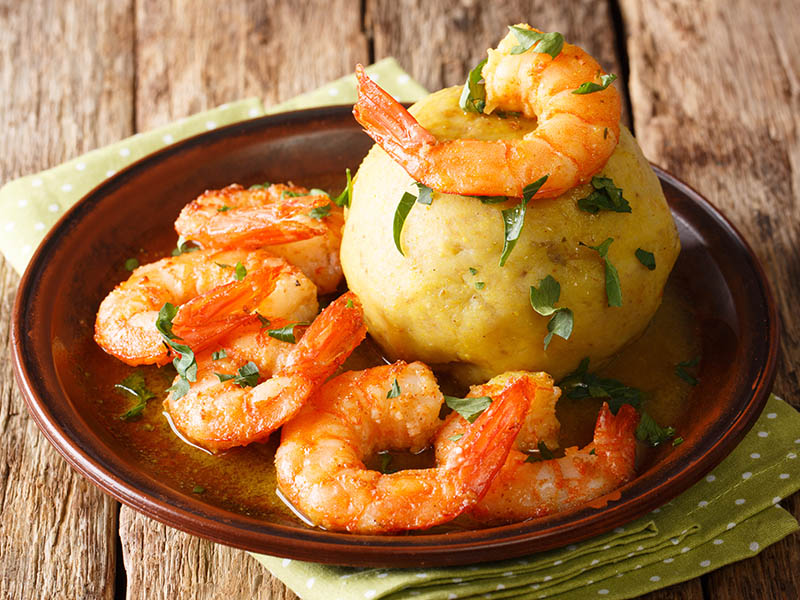
When visiting a restaurant in the Dominican or Puerto Rican, you will surely find dishes involving plantains on their menus. When you ask the people living in these two countries about their favorite food, they will mention a dish containing this ingredient.
Therefore, it is understandable that Mofongo is one of these two countries’ most popular and iconic dishes. It involves plantain as the core ingredient, which can be mashed, fried, or boiled and mixed with various spices.
However, the Puerto Rican prefers mashing this ingredient for a dish called Mangu (mashed plantain), while the Dominicans favor their traditional Mofongo.
Every Dominican and Puerto Rican are born and grew up eating plantain, which has become an indispensable ingredient in their lives. In other words, this little and delicious vegetable is the soul of the two countries’ cuisines.
Dominican And Puerto Rican People Love Stewed Food
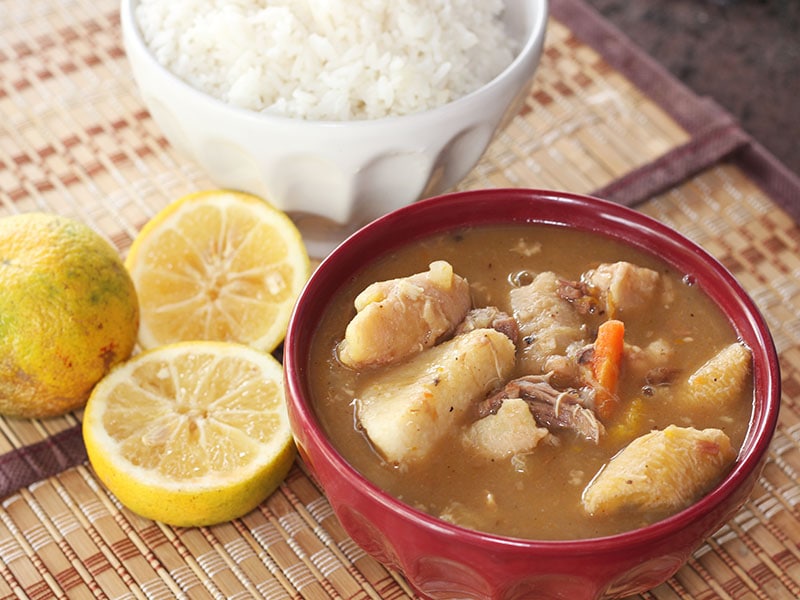
Though the cooking methods are diversified in the two countries, stewing the food for many hours is still the most favored. Saconcho, a meat stew and soup, is very prevalent in Dominican and Puerto Rican.
People in the two countries cook and serve stewed food and soups all year round, whether for regular meals, parties, or special occasions. They often use a variety of meat like pork, beef, or chicken combined with root vegetables for the stews.
The Ingredients Are Always Fresh And Abundant
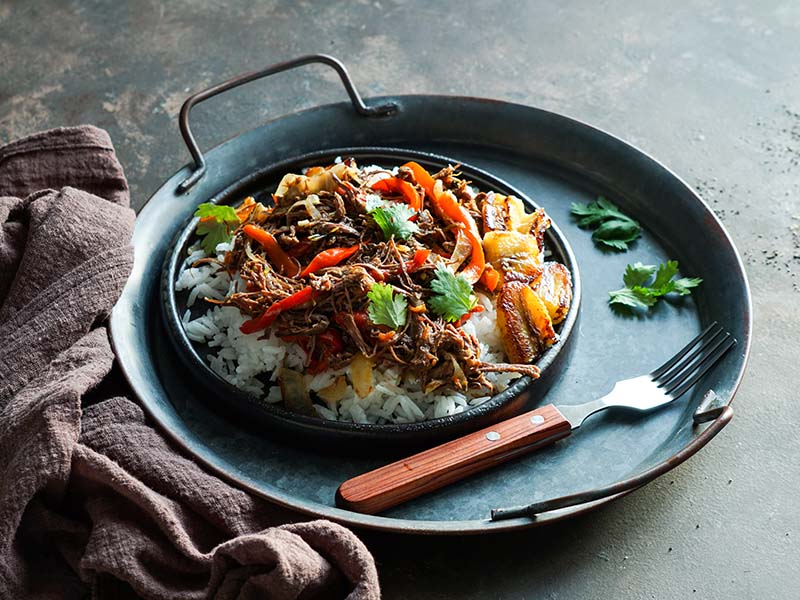
The tropical climate is ideal for the cultivation of crops and cattle. That’s why the Dominican and Puerto Rican people rarely used processed food in their cooking. They always used the freshest ingredients harvested from the local farms or raised in their own gardens.
These two countries are the true heavens for those who love fresh and high-quality ingredients. From meat and fruits to vegetables, they can be found in any local markets, restaurants, and street stands across the two countries.
No wonder Caribbean food is among the healthiest culinary worldwide. There are rarely any processed cans of food, additives, or chemicals. The dishes are very yummy and nutritious, which will make you addicted.
What About Their Dissimilarities?
No matter how identical the two countries’ cuisine is, there are still some differences you should consider. However, these differences are not so significant and don’t necessarily make one country’s food better than the other’s. Now let’s find out.
Culinary Influences
The Dominican Republic and Puerto Rican cuisines share similar culinary influences from various regions, but they are not identical. Besides the Spanish, African, and Taino Arawak cuisines, there are some noticeable differences in their culinary history.
For example, Dominican cuisine is also strongly influenced by Chinese, European, and Middle Eastern cooking styles. These cuisines have introduced other exotic food to the Dominican Republic, such as salted, smoked herrings, or, most importantly, pasta.
By contrast, Puerto Rican foods seem to have more in common with those from Spain and other Latin American countries. You can also feel the indigenous and African elements more clearly in them.
Flavors

Puerto Rican and Dominican cuisines generally use diversified and filling spice combinations, such as the Sofrito and herbs. However, the seasoning materials of Puerto Rican are more complicated as they love combining the spices together.
For example, Puerto Ricans usually use a mixture of garlic and vinegar or lime juice, called Adobo, to season red and white meat. They also combine garlic, onions, peppers, and sweet chilies to season the regular dishes, called sofrito.
Meanwhile, the Dominican also uses sofrito but comes in a more simplified version. Most traditional Puerto Rican dishes are a balance between the sourness of vinegar and lime juice and the sweetness of fresh and dried fruits.
The Choice Of Ingredient

The two culinary cultures love plantain and fresh ingredients, but the Puerto Rican people favor seafood more. Meanwhile, the Dominicans don’t consume as much seafood but rather red meat and poultry.
Therefore, meat-based dishes are more popular in the Dominican, while Puerto Rican food features the scent and flavor of the sea. Just take the popular Mofongo, for example.
In Puerto Rican, Mofongo is often served with rice and fried shrimp, while in the Dominican, people prefer to eat it with stewed meat.
Cooking Method
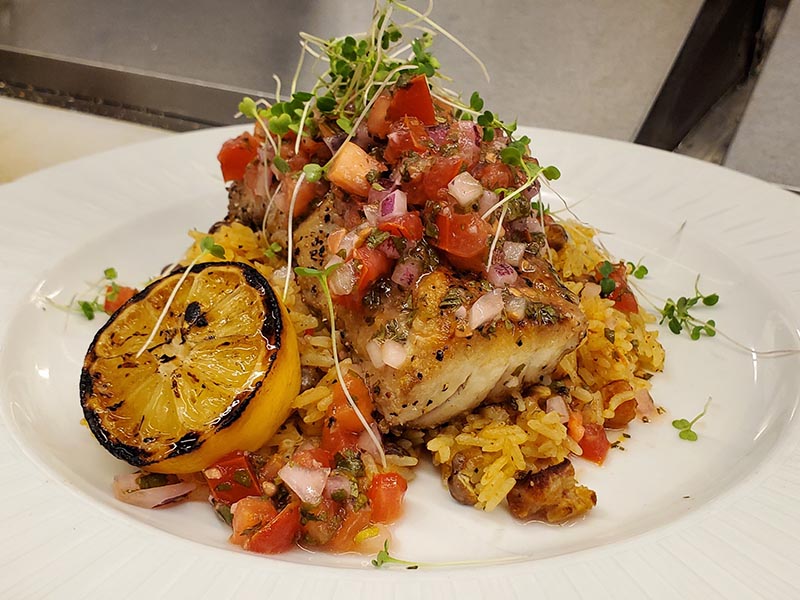
People in the Dominican Republic and Puerto Rican utilize various cooking methods like stewing, frying, or boiling the ingredients to prepare yummy dishes. However, stewing is the more popular cooking method in the former.
On the other hand, Puerto Ricans also love frying their food. They resort to a famous cooking style called Cocina Criolla (Creole cooking). It is a prevalent feature of the Caribbean region and Spanish-speaking countries, including Puerto Rico.
The Spanish colonists are believed to have created and introduced Cocina Criolla to these regions. They used the indigenous Caribbean ingredients and cooking methods for the traditional Spanish dishes, making way for the formation of Creole cooking.
It involves various cooking methods like grilling, baking, boiling, and stewing. In short, Creole cooking is the combination of native and Spanish ingredients, cooking methods, and culinary influences.
Most Popular Dishes
Besides the famous dishes like Mofongo (mashed, fried plantain) or Saconcho (meat and vegetable stew), there are some iconic dishes that are more prevalent in one country than the other.
The most prevalent dish in the Dominican Republic is La Bandera Dominicana (the Dominican Flag). It is a full meal made of staple ingredients like vegetables, meat, beans, and white rice. The Dominicans serve La Bandera Dominicana on a daily basis.
Meanwhile, Puerto Rican cuisine is very famous for its Tripleta. This is the Puerto Rican sandwich version that combines three types of meat for the stuffing. Tripleta is every Puerto Rican’s favorite dish for breakfast or as a light snack at late night.
Most Popular Beverages
There are various beverages in Dominica and Puerto Rico, like alcoholic drinks, fruit juices, and smoothies. But people in these two regions prefer different beverages for special occasions.
On Christmas, for example, the Dominicans often make fruit juices from locally cultivated fruits like banana, avocado, mangoes, or grapes to celebrate the occasion. Meanwhile, the Puerto Ricans prefer a special cocktail called Piña Colada.
Challenge Your Cooking Skills With These Puerto Rican Recipes
It is hard not to fall in love with the diversified flavors and colorful textures of Puerto Rican food. If you want to get a taste of Puerto Rican cuisine, don’t hesitate to try out these simple yet delicious recipes. I promise that their tastes won’t disappoint you.
1. Pastelón (Puerto Rican Plantain “Lasagna”)
Pastelón always appears at the top of the most popular and iconic Puerto Rican dishes. It involves everyone’s favorite ingredient: plantain, which is thinly sliced and served with delicious ground beef and melting cheese.
This filling and moist texture of the cheese, plantain, and minced meat combination will drive everyone’s hunger at first glance. Pastelón is a perfect side or main dish for a full and satisfying meal on the weekends. It can also make your occasions more special.
Plantain can be found in many grocery stores and local markets. Ensure that you buy the ripe and finest plantain, which comes in a beautiful yellow skin mottled with black and brown spots. You can buy the green plantains and wait for them to ripen.
Making the Pastelón (Puerto Rican plantain “Lasagna”) is very simple and fun. This video will show you why!
2. Arroz Con Gandules (Puerto Rican Rice with Pigeon Peas)
Another national Puerto Rican dish, the Arroz con Gandules, is a true pleasure for the fans of fried rice. It combines the iconic Puerto Rican vegetables like Gandules (pigeon peas), olive, and sofrito, a classic Caribbean spice combination.
Arroz con Gandules is a perfect dish to celebrate special occasions like Thanksgiving and Christmas. It features a crunchy rice texture with beautiful yellow colors mixed with the green of root veggies.
The dish is vegetarian-friendly, with nutritious and healthy ingredients. However, you can still add meat and pork to enhance its flavors. The fabulous smells of the warm rice combined with the savory and multi-flavor of the dish are just irresistible.
3. Tripleta (Puerto Rican Sandwich)
Triplet is a famous sandwich dish in Puerto Rico, favored by people of all ages and genders. It combines familiar ingredients like cheese, fresh vegetables, and meat, bringing a hearty and yummy taste to each bite.
Its name refers to the three meat types (roast poor, cube steak, and ham). Some versions may include longaniza sausage or poultry.
To prepare, season the meat with salt, pepper, parsley, cumin, and sauce, then marinate it in the fridge. After around 2 hours, cook the marinated meat on a hot stove or frying pan for around 10 minutes before cutting it into small slices.
Spread your favorite sauces like mayo or ketchup on the baguette first, then assemble the cooked meat and vegetables to serve.
3 Traditional Dominican Food That You Will Love
There’s no better way to discover the beauty of a country’s culinary cuisine than trying its traditional foods. These iconic recipes are very popular in the Dominican, which can give you a sense of the cultural blend and Caribbean flavors.
1. Sancocho Dominicano (Dominican Meat and Vegetable Stew)
El Sancocho is the king of stews, a favorite dish of every Dominican. It combines the essence and beauty of Dominican cuisine through the yummy flavors and the diversified use of ingredients.
A true El Sancocho involves up to seven different types of meat, such as beef, chicken, chuck steak, and most importantly, pork chop. The tenderly stewed meaty ingredients combined with the fresh root veggies create an irresistible flavor.
The preparation of this dish may seem daunting as it involves a lot of ingredients. But its delicate flavors and health benefit are worthy tradeoffs. If you want to get more insights into the beauty of Dominican culinary culture, don’t skip Sancocho Dominicano.
This is the only guide you need for making the Sancocho Dominicano!
2. La Bandera Dominicana (The Dominican Flag)
La Bandera Dominicana is also known as the traditional national lunch of the Dominican public. Regardless of the age or region, every Dominican dweller grew up having La Bandera Dominicana for lunch, making it one of the most popular and iconic dishes.
Since the Dominicans view lunch as the most important meal of the day, their lunch has to be both yummy and nutritious. La Bandera Dominicana combines all these qualities, delivering a hearty flavor that makes you full the whole day.
The best thing about La Bandera Dominicana lies in its use of the most popular ingredients in the country: rice, bean, meat, and vegetables. These diversified components give the lunch an appealing and colorful appearance.
Come to any Dominican restaurant with an empty stomach and order La Bandera Dominicana with fruit juice or iced water. I guarantee that it is one of the best culinary experiences you’ll ever have.
3. Mondongo (Tripe)
Every stew and soup in the Dominican Republic is a culinary beauty, and so is this Dominican Mondongo. If you have never eaten tripe before (the stomach of the cow), its chewy texture combined with the flavors of spices and herbs will make you addicted.
Beside the tripe as the staple ingredients, you also need to prepare some veggies like garlic, onion, peppers, potatoes, and carrots. The cilantro and tomato sauces are indispensable seasoning materials, which give this dish a beautiful reddish color and a hearty aroma.
A bowl of Mondongo in the morning contains enough protein and healthy fiber for a whole tiring day at work. The dish can be prepared ahead and stored in the fridge using an airtight container. Mondongo is best served with white rice for a full and hearty meal.
FAQs
If you still want to discover more about the Puerto Rican and Dominican cuisines, don’t skip this section. It contains some side information and useful answers that can satisfy your curiosity.
Dominican Or Puerto Rican: Which Is Your Favorite Cuisine?
The Dominican Republic and Puerto Rican are the Caribbean tropical islands that speak the same language. Their culinary cultures are a rich blend of cultural influence and the indigenous Caribbean cuisine, heightening the beauty of these countries’ cultures.
It’s not surprising how the knowledge relating to different cuisines worldwide always fascinates us. I hope that you are satisfied with the information and comparisons provided in this post. So which cuisine is your favorite?
If you had the choice between Dominican and Puerto Rican food, which one would you go for? Please use a comment section and let me know your thoughts. If you find the knowledge in this post helpful, please share it and spread the Caribbean culinary beauty. Many thanks!
References
- En.wikipedia.org. 2022. History of the Dominican Republic – Wikipedia.
- En.wikipedia.org. 2022. Dominican Republic cuisine – Wikipedia.


Linda Dean
Expertise
Culinary Arts, Food Journalism, Global Cuisine, Exploration, Recipe Development, Cultural Food Studies, Culinary Travel and Storytelling
Education
Culinary Institute of America, Hyde Park, NY
Program: Associate in Culinary Arts
Focus: Developed a comprehensive understanding of global cuisines and essential cooking techniques. Engaged in intensive hands-on practice in both kitchens and real-world settings, guided by expert chefs. This program emphasized the application of culinary skills in professional environments, preparing students for a variety of roles in the culinary industry.
City, University of London, London, UK
Program: BA Journalism
Focus: Gained expertise in media studies with a strong foundation in reporting, editing, and communicating. While the program focuses broadly on journalism, the skills acquired apply to food journalism, including the ability to analyze and report on food culture and culinary trends effectively.
Linda Dean is an experienced chef and food writer who loves exploring flavors from around the world. Trained at the Culinary Institute of America, Linda has spent over ten years mastering the art of making dishes that truly represent different cultures. She also studied journalism at City, University of London, which helps her write engaging stories about these foods.
On heythattastesgood.com, Linda shares recipes that bring the world’s kitchens to her readers. She focuses on authentic tastes and the stories behind them, making it easy for anyone to try international cuisine at home.